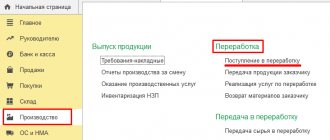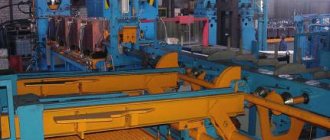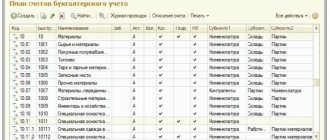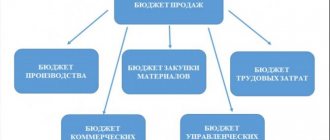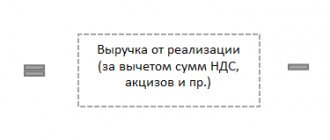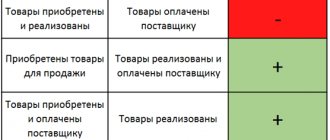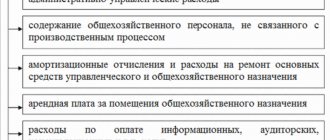At what cost should materials be accepted for accounting?
To accept materials for accounting, evaluate them at actual cost (clause FSBU 5/2019).
Its calculation depends on the method of obtaining materials. The following options are possible:
- Purchase for a fee . Form the actual cost in the standard manner - take into account all the costs of acquisition, delivery and preparation for operation. Don’t forget to exclude VAT from the price, which you will then deduct.
- Free receipt, full or partial payment in kind . Measure materials at fair value. The rules for its calculation are approved in IFRS No. 13 dated December 28, 2015. Do not forget to increase it by the amount of additional costs for acquisition, delivery and preparation for use.
- Capital contribution . Accept for accounting at actual cost, taking into account additional costs.
- Disposal, repair, modernization or reconstruction of non-current assets. Estimate the cost of materials using the lower of two values:
- cost of similar materials;
the sum of the book value of the asset and the costs of obtaining materials and preparing them for use.
Important! Do not include in inventory cost:
- disaster-related costs;
- management expenses, if they are not related to the acquisition;
- storage costs, unless this is part of production or a condition of purchase;
- refundable indirect taxes.
Topic 2.2. Production cost accounting
1. The basis for dividing costs into direct and indirect is:
a) range of products;
b) place of cost occurrence;
+c) economic homogeneity of costs;
d) volume of production.
2. The full cost of production is determined:
a) by summing up all production costs;
+b) by summing production costs and non-production expenses;
c) by subtracting the costs of selling products from production costs;
3. The economically justified basis for the distribution of costs for the maintenance and operation of equipment is:
a) the basic salary of production workers;
b) the amount of direct costs for manufacturing products;
+c) estimated (normative) rate;
d) volume of production.
4. If a final defect is discovered in the main production workshop, an accounting entry is made:
5. Accounting entry D-t 20 K-97 reflects:
a) write-off of losses from defects;
+b) creating a reserve for the repair of fixed assets;
c) repayment of expenses for the development of new types of products.
6. When writing off the expenses of the assembly shop, an accounting entry is made:
a) D-t 02 K-t 10; b) D-t 23 K-t 26;
+c) D-t 20 K-t 25; d) D-t 44 K-t 25.
7. An accounting entry is made for the identified shortage of work in progress in the main workshops:
a) D-t 10 K-t 20; +b) D-t 94 K-t 20;
c) D-t 84 K-t 20; d) D-t 99 K-t 20.
8. What kind of posting reflects the write-off of the cost of services rendered and work performed?
9. What kind of entries reflect unreimbursed losses from defects?
10. Representative expenses include:
a) for personnel training;
+b) for an official reception;
c) for the maintenance of the organization’s administration.
11. Costs for the development of new types of products are recorded in the account:
How to reflect transactions with materials in accounting
Three main accounts are involved in the accounting of materials: 10 “Materials”, 15 “Procurement and acquisition of materials”, 16 “Cost variance”.
The main account for accounting for materials is 10. Its debit reflects receipts, and its credit reflects write-offs to production and disposal for other reasons.
You can open subaccounts for account 10 to make accounting simpler and clearer. For example, separately highlight raw materials, fuel, spare parts, containers, workwear, etc.
Keep records of exports and imports in the Kontur.Accounting web service. Simple accounting, payroll and reporting in one service
We receive materials to the warehouse
Each receipt of materials must be confirmed by primary documents. Some of them you will receive from the supplier, and some you will need to arrange yourself. The complete list of documents depends on how you received the materials, for example, under a supply agreement or by producing them yourself.
The receipt of materials at the warehouse is registered by the storekeeper or other employee with financial responsibility. To do this, on the day of acceptance, a receipt order is drawn up in a form approved by the manager. It could be:
- unified form No. M-4 (Decree of the State Statistics Committee of October 30, 1997 No. 71a);
- a form with all the details that you developed yourself (Part 2 of Article 9 of the Law of December 6, 2011 No. 402-FZ).
Important! To reduce paperwork, the receipt order can be replaced with a stamp with all the necessary details. It is placed on the supplier’s document, for example, on the invoice. This decision must be reflected in the accounting policies.
The accounting entries to record the receipt of materials depend on how they were received and what accounts the organization uses.
Purchasing materials
You should have invoices, invoices, invoices and accompanying documents on hand. Capitalize materials at actual cost. If you create the cost specifically on account 10 (this should be specified in the accounting policy), the postings are as follows:
| Debit | Credit | Operation |
| 10 | 60 | Materials purchased |
| 19 | 60 | The seller submitted VAT |
| 10 | 60 (76, etc.) | Additional costs for purchasing materials |
| 19 | 60 (76, etc.) | VAT on additional costs |
| 68 | 19 | VAT on the cost of materials and additional costs is deductible |
| 60 (76) | 51, 50 | Paid for materials and services of other contractors |
Free receipt
The person who gave you the materials must provide the same documents as the seller. Determine actual cost using fair value. In accounting, create the following entries:
| Debit | Credit | Operation |
| 10 | 98-2 | Materials received as a gift |
| 10 | 60 (76, etc.) | Additional costs for purchasing materials |
| 19 | 60 (76, etc.) | VAT on additional costs |
| 68 | 19 | VAT on additional costs is deductible |
| 60 (76) | 51, 50 | Additional costs paid |
Capital contribution
The contribution of materials to the authorized or share capital is formalized by an act of acceptance and transfer; it can be drawn up in any form, but with mandatory details (clause 2 of article 9 of the Law of December 6, 2011 No. 402-FZ).
| Debit | Credit | Operation |
| 10 | 75-1 | The materials were contributed towards payment of the authorized capital |
| 75-1 | 83 | Share premium is recognized if the cost of materials received is greater than the nominal value of the shares (nominal size of the share) |
| 19 | 83 (75-1) | VAT is reflected on the cost of materials, recovered by the transferring party |
| 10 | 60 (76, etc.) | Additional costs for obtaining materials |
| 19 | 60 (76, etc.) | VAT on additional costs |
| 68 | 19 | VAT on the cost of materials and additional costs is deductible |
| 60 (76) | 51, 50 | Additional costs paid |
Keep records of exports and imports in the Kontur.Accounting web service. Simple accounting, payroll and reporting in one service
Receipt upon liquidation of fixed assets
Complete the receipt with a demand invoice. If you liquidate real estate, draw up an act on the capitalization of the MC. Forms No. M-11 or No. M-35 are suitable for this, respectively. Create the following entries:
| Debit | Credit | Operation |
| 10 | 01-v (91-1) | Materials from the liquidation of fixed assets were capitalized |
| 10 | 60 (76, etc.) | Additional costs for obtaining and preparing materials |
| 19 | 60 (76, etc.) | VAT on additional costs |
| 68 | 19 | VAT on additional costs is deductible |
| 60 (76) | 51, 50 | Additional costs paid |
If you use account 15, first account for the receipt of materials and additional costs on account 15, and then capitalize at the accounting price by posting Dt 10 Kt 15.
For those who use both 15 and 16 accounts, deviations between the accounting price and the actual cost are reflected in the following entries:
- Dt 16 Kt 15 when the actual cost exceeds the book price;
- Dt 15 Kt 16 when the book price exceeds the actual price.
How to write off materials when used
The materials that you write off from account 10 can be assessed in three ways (clause 36 of FSBU 5/2019):
- at the cost of each unit;
- at average cost;
- according to the FIFO method or at cost first in time.
FSBU 5/2019 establishes that for materials that have similar properties and nature of use, the same cost calculation method must be used each time. Fix the chosen method in your accounting policy.
To account for the consumption of materials, choose one of two methods:
- write off materials from account 10 when you transfer them to units for use;
- write off from account 10 only those materials that are actually consumed, and reflect the transfer to the unit as an internal movement - by making an entry in analytical accounting.
Write-off of materials
The write-off of materials must always be confirmed by primary documents. When you transfer materials within the organization for further use, create requirements-invoices or limit-fence cards. When selling or transferring materials to another organization, you need an invoice; if there is a shortage, you will need an inventory list.
Postings for writing off materials can be as follows:
| Debit | Credit | Operation |
| 26 (44) | 10 | The cost of materials transferred or used for economic, managerial or commercial needs has been written off |
| 20 (25, 29, 23) | 10 | The cost of materials transferred or used in production has been written off |
| 08 | 10 | The cost of materials transferred to create non-current assets was written off |
| 91-2 | 10 | The cost of materials is written off as other expenses (upon sale) |
If you sell materials, write them off at the same time you recognize the proceeds from the sale; in all other cases, at the time of disposal.
Write-off of deviations from actual costs
Those who use accounting prices and account 16 must also write off deviations when writing off materials.
Write off the difference accumulated on account 16 to the cost accounting accounts:
- Dt 20 (23, 25, 26, 29, 44, 97) Kt 16 - the accumulated positive difference is written off;
- REVERSE Dt 20 (23, 25, 26, 29, 44, 97) Kt 16 - the accumulated negative difference is written off.
Return of unused materials
If you wrote off materials, but never used them for production or other needs, reflect the return in the same way as you reflect the transfer of materials to departments.
If during transfer you reflected the release to production and wrote off materials from account 10, reflect the return of materials by posting: Dt 10 Kt 20 (23, 25, 26, 29, 44, 97, etc.).
If you reflected the transfer of materials as an internal movement (only in analytical accounting for account 10), reflect the return only in analytical accounting.
Kontur.Accounting will help organize accounting of materials in the company. Create a list of materials, create documents for receipt and sale, write off inventory items for costs, shortages and losses. Track inventory balances at the enterprise and analyze the 10th account. All tasks are automated. Try accounting for materials in Accounting. New users receive 14 days of work as a gift.
Topic 2.1. Inventory accounting
1. What kind of transaction is used to record the operation “accepted supplier’s invoice for materials received at the warehouse”?
+a) D-t10 K-t 60, D-t 19 K-t 60;
2. What kind of posting is used to document the release of material from the warehouse for packaging finished products in the warehouse?
3. At what valuation are materials reflected in the balance sheet?
c) by agreement;
+d) at actual cost.
4. Specify the posting of the transaction for transferring funds to the transport organization for the delivery of materials:
5. What does it mean to evaluate materials using the FIFO method?
+a) the first batch for receipt - the first for expenditure;
b) the last one for income - the first one for expenses;
c) first for receipt - last for expenditure.
6 What accounting entry is made for the shortage of materials identified when accepting cargo from a transport organization?
7. What do accounting entries mean in accounting accounts: D-t. 91 “Other income and expenses”, subaccount 91-2 “Other expenses” Account number. 10 "Materials":
a) deviations in the cost of materials are written off;
b) materials were released from the warehouse for the needs of auxiliary production;
+c) materials released for external sales?
8.Which synthetic account is used to determine the result from the sale of materials:
b) 51 “Current accounts”;
+d) 91 “Other income and expenses”?
9. Which account is debited when transferring funds to a transport organization for the delivery of materials:
a) 51 “Current accounts”;
+b) 60 “Settlements with suppliers and contractors”;
d) 15 “Procurement and acquisition of material assets”?
What entries reflect the acquisition of intangible assets from a legal entity?
Topic 1. Business process of supply/procurement/purchase. Accounting for material and industrial inventories.
1. What kind of transaction is used to record the operation “accepted company invoice for materials received at the warehouse”? ( D10-K60)
2. What kind of posting is used to document the release of material from the warehouse for packaging of finished products shipped to the buyer? ( D44-K10)
3. At what valuation are materials reflected in the balance sheet? ( According to their actual cost)
4. Specify the posting of the transaction of transferring funds to the transport organization for the delivery of materials? ( D76-K51)
5. What is the register for analytical accounting of materials? ( Turnover balance sheet)
6. In which accounting register are the amounts and percentages of transportation and procurement costs calculated? (SHEET No. 10)
What document is used to document uninvoiced deliveries?
Certificate of acceptance of valuables
What does the FIFO method mean for valuing materials?
FIFO is a method for valuing inventories when they are written off for sale. Means that the inventory that is first received into production should be valued at the cost of the first acquisitions.
Another answer: This means that the goods accepted for registration first are also deregistered first.
What document is used to document the permanent release of materials for production?
Limit – fence card
Topic 2. Accounting for fixed assets.
At what cost are fixed assets included in the balance sheet currency?
At the original cost of these funds
What documents are used to document the receipt of fixed assets?
Certificate of acceptance and transfer of fixed assets
What entries reflect the purchase of equipment from a supplier that does not require installation?
Inventory cards are opened on the basis of what documents?
Based on the act of acceptance and transfer of fixed assets
What document is used to document the gratuitous transfer of an object to another company?
Donation agreement or Certificate of gratuitous transfer/acceptance
Which entry reflects the depreciation of the workshop's fixed assets?
What is the register of analytical accounting of fixed assets?
What accounting entry reflects the profit from the sale of fixed assets?
D91-K01 – the cost of fixed assets is written off.
D76-K91 + D51-K76 – accrued revenue from the sale of fixed assets
What transactions are used to record the write-off of the value of a retired fixed asset?
D01 (sub-account “Retirement of fixed assets”) - K01 – write-off of primary cost
D02-K01 (sub-account “Disposal of fixed assets”) - depreciation on retired assets is written off
D91-K01 (sub-account “Retirement of fixed assets”) – residual value written off
(Most likely there will be only the last 2 postings or only the last one)
10. How to reflect the capitalization of scrap from the disposal of fixed assets? ( like D.10 - K 91.1)
What transactions reflect the gratuitous transfer of fixed assets to another organization?
D01 (sub-account “Retirement of fixed assets”) - K01 – write-off of primary cost
D02-K01 (sub-account “Disposal of fixed assets”) - depreciation on retired assets is written off
D91-K01 (sub-account “Retirement of fixed assets”) – residual value written off
D91-K10 or 70 or 69 – expenses for the transfer of fixed assets are written off
D91-K68 – VAT is charged on transferred funds to the receiving company
(There will be some 2 or 1 of these postings)
What entries reflect the revaluation of fixed assets for production purposes?
D01-K83 – revaluation amount
D01-K84 – repayment of early assessment
D83/84-K02 – adjustment of depreciation
D83-K84 – transfer of the revaluation amount upon disposal of fixed assets
D84-K83 – transfer of the amount of adjusted depreciation upon disposal of an object
(There will be some 2 or 1 of them, most likely the last 2 will not be)
13. How to reflect the acquisition of property that requires installation? D07-K60
Topic 3. Accounting for intangible assets.
How is straight-line depreciation calculated for intangible assets?
Based on the original cost of the intangible asset and the depreciation rate calculated based on the useful life of this object
In what valuation are intangible assets reflected on the balance sheet?
Reflected at the residual value (original - depreciation accrued for the balance sheet)
What transactions reflect the write-off of intangible assets?
D05-K04 – depreciation on intangible assets written off
D91-K04 – the residual value of intangible assets is written off
D99-K91 – financial result from writing off intangible assets
What entries reflect the acquisition of intangible assets from a legal entity?
D08-K60 – reflects the enterprise’s debt to sellers of intangible assets
Final test for the course “Practical fundamentals of accounting of an organization’s property”
We are accepting applications
Apply now
For students in grades 1-11 and preschoolers
Final test for the course
“Practical principles of accounting of an organization’s property”
1. At what cost are fixed assets included in the balance sheet currency?
a) according to the original;
+b) by residual;
c) according to rehabilitation.
2. Which account is used to record the sale of securities?
3. What kind of posting reflects the calculation of depreciation of fixed assets of the workshop?
4. What accounting entries reflect the write-off of the value of a disposed fixed asset?
+a) D-t 02 K-t 01, D-t 91 K-t 01;
b) D-t 91 K-t 02, D-t 99 K-t 01;
c) D-t 02 K-t 91, D-t 91 K-t 01.
5.How to reflect the purchase of equipment that requires installation?
a) D-t 01 K-t 60, D-t 07 K-t 01;
b) D-t 08 K-t 60, D-t 07 K-t 60;
+c) D-t 07 K-t 60, D-t 19 K-t 60.
6. How is depreciation calculated on intangible assets?
+b) based on the useful life and initial cost;
c) 50% upon receipt and 50% upon debiting.
7. Which method of calculating depreciation is not used for objects
a) linear method;
b) reducing balance method;
c) proportional to the volume of production;
+d) the sum of the number of years of useful use.
8. What entries reflect the acquisition of intangible assets from a legal entity?
+a) D-t 08 K-t 60, D-t 19 K-t 60, D-t 04 K-t 08;
b) D-t 04 K-t 08, D-t 04 K-t 19;
9. The business reputation of a company is
a) the totality of costs incurred in connection with the creation of the organization;
+b) the difference between the estimated value of the organization and its net value
c) the right to use the corporate name of a legal entity?
10. Financial investments include:
a) the organization’s investments in expanding production;
+b) investments of the organization in the authorized capitals of other organizations and securities;
c) the organization’s costs for the acquisition of fixed assets.
11. If the actual cost of the purchased bonds is greater than the nominal value, then the difference is written off by posting:
12. Debt securities include:
13. Long-term investments in fixed assets are aimed at:
a) for long-term financial investments in government securities;
b) for repairs of fixed assets;
+c) for the acquisition of land plots and environmental management facilities.
14. Long-term investments are accounted for in the following accounts:
a) 01 “Fixed assets”;
b) 04 “Intangible assets”;
c) 07 “Equipment for installation”;
+d) 08 “Investments in non-current assets”;
15. Settlements between developers and contractors for work performed on the construction of fixed assets are carried out:
+a) at estimated cost;
b) at an agreed price;
c) at inventory value;
d) at planned cost.
16.What kind of transaction is used to record the operation “accepted supplier’s invoice for materials received at the warehouse”?
+a) D-t10 K-t 60, D-t 19 K-t 60;
17. Indicate the posting of the transaction for transferring funds to the transport organization for the delivery of materials:
18. At what valuation are materials reflected in the balance sheet?
c) by agreement;
+d) at actual cost.
19.Which synthetic account is used to determine the result from the sale of materials:
b) 51 “Current accounts”;
+d) 91 “Other income and expenses”?
20. The basis for dividing costs into direct and indirect is:
a) range of products;
b) place of cost occurrence;
+c) economic homogeneity of costs;
d) volume of production.
21. The full cost of production is determined:
a) by summing up all production costs;
+b) by summing production costs and non-production expenses;
c) by subtracting the costs of selling products from production costs;
22. Which entry reflects the write-off of the cost of services rendered and work performed?
23. Costs for the development of new types of products are taken into account in the account:
a) 96 “Reserves for future expenses”;
+b) 97 “Future expenses”;
c) 20 “Main production”;
d) 23 “Auxiliary production”.
24. In accordance with international accounting standards in the balance sheet, finished products are valued by:
a) standard cost;
b) negotiated price;
+c) actual cost.
25. The total cost of goods sold is:
a) the actual cost of manufactured finished products;
+b) the sum of the actual cost of goods sold and selling expenses.
26. VAT accrual is reflected in accounting by posting:
27. Profit received from the sale of products (works, services) is reflected by the entry:
28. In the payment order, the buyer indicates the payment:
a) the total amount, excluding VAT;
b) the total amount indicating VAT as a percentage;
+c) the total amount indicating the amount of VAT.
29. What transactions reflect the posting of goods and packaging received from the supplier:
+a) D-t 41 K-t 60, D-t 19 K-t 60;
30. At what cost are goods reflected in the balance sheet:
+b) according to fact;
31. What entry is made for the amount of trade margin in retail organizations:
32. Accounting for the sale of goods is kept on the account:
33. What does accounting entry D-t 51 K-t 62 mean?
a) transfer of funds to the buyer;
+b) receiving an advance from the buyer.
34. What does the debit balance mean on account 71 “Settlements with accountable persons”?
+a) debt of accountable persons to the enterprise;
b) the enterprise's debt to accountable persons.
35. Calculations for deposited wages include:
a) to accounts receivable;
+b) to accounts payable.
36. Which transaction reflects the supplier's advance payment received from the buyer?
37. By what posting does the customer reflect the advance payment for services?
38. Which accounting entry reflects the sale of products for cash?
39. Excess amounts credited (written off) by the bank are reflected in the account:
a) 94 “Shortages and losses from damage to valuables”;
+b) 76 “Settlements with various debtors and creditors”;
c) 99 “Profits and losses”;
d) 91 “Other income and expenses.”
40. Which entry reflects the purchase of a checkbook for payments by checks?
41. The crediting of foreign currency earnings to the seller’s account is reflected by the entry:
+a) D-t 52 “Transit currency account” K-t 90 “Sales”;
b) D-t 52 “Current foreign currency account” D-t 90 “Sales”.
- Gorbachev Andrey Alekseevich
- Write
- 4961
- 25.10.2016
Material number: DB-290140
- 25.10.2016
- 415
- 25.10.2016
- 604
- 25.10.2016
- 324
- 25.10.2016
- 451
- 25.10.2016
- 995
- 25.10.2016
- 267
- 25.10.2016
- 963
Didn't find what you were looking for?
You might be interested in these courses:
All materials posted on the site were created by the authors of the site or posted by users of the site and are presented on the site for informational purposes only. Copyrights for materials belong to their legal authors. Partial or complete copying of site materials without written permission from the site administration is prohibited! Editorial opinion may be different from those of the authors.
